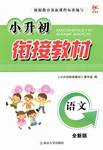题目内容
阅读理解
In the 1970s, with ever-increasing international travel and tourism, the United States Department of Transportation decided to design a set of symbols(符号)for airports, stations, and public facilities(设施). The aim was to design symbols that would be clear to people in a hurry and to those who can not read English. Therefore, the set of symbols shown below was designed. Then the designers planned an experiment with an international sample(抽样调查) of 8-year-old children from Sweden. Japan, France, Canada, and Britain. The purpose of the experiment was to determine how clear the symbols would be to the children, who were not experienced international travelers.

The children were shown the set of sample symbols, and were then asked to explain to the experimenters what the symbols meant. The researchers thought that if the international sample of children could understand them, the grown-up travelers would probably also recognize their meanings. The following graph(图表) shows the percentages of correctly explained symbols.

The experiments discovered that most of the children easily understand the telephone receiver and cigarette symbols. However, there were some interesting differences in their answers to the other four symbols. The Japanese children most easily understood the symbol standing for“coffee shop”. The experimenters thought that this fact showed children in Japan are more familiar with such shops than children in Sweden and Canada. The Japanese, French, and Canadian children all equally recognized the idea of“information”showed by the question mark.
Interestingly, the French and Canadian children understood the symbol referring to“campground(露营地)”better than the other children. Again, the researchers thought that recognition of a symbol shows how common the activity is in a country.
One particularly difficult symbol was that of the umbrella and glove used for“lost and found”, which was correctly explained by less than 50% of the children in four of the five countries. On the basis(基础) of this finding, the experimenters decided to add a question mark to make this symbol easier to understand.
1.Which of the following shows the correct meaning of(X), (Y), and (Z) in the graph above?
[ ]
A.Campground, Coffee Shop, Lost and Found.
B.Lost and Found, Campground, Coffee Shop.
C.Coffee shop, Lost and Found, Campground.
D.Telephone, No smoking, Information.
2.If we compare the Japanese and French children's understanding of the question mark and cigarette symbols, then we can find a difference of _____ between these symbols.
[ ]
A.0% B.10%
C.80% D.90%
3.The _____ symbol was the most difficult for the Japanese children to understand.
[ ]
A.cup B.question mark
C.tent D.umbrella and glove
4.Which of the following statements is TRUE?
[ ]
A.The experimenters thought Japanese children drink coffee.
B.The most difficult symbol was changed to make it clearer.
C.The question mark symbol is the least difficult in all five countries.
D.The researchers thought children would know as much as grown-ups.
解析:

 学而优衔接教材南京大学出版社系列答案
学而优衔接教材南京大学出版社系列答案
| |||||||||||||||||||||||||||||||||||||||||||||
| |||||||||||||||||||||||||||||||||||||||||||||||||||||||||||||||||||||||||||||||||||||||||||||||||||||||||||||||||||||||||||||||||||||||||||||||||||||||||||||||||||||||||||||||||||||||||||||||||||||||||||||||||||||||||||||||||||||||||||||||||||||||||||||||||||||||||||||||||||||||||||